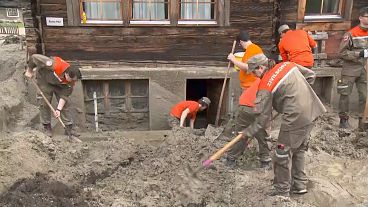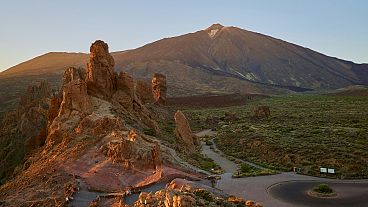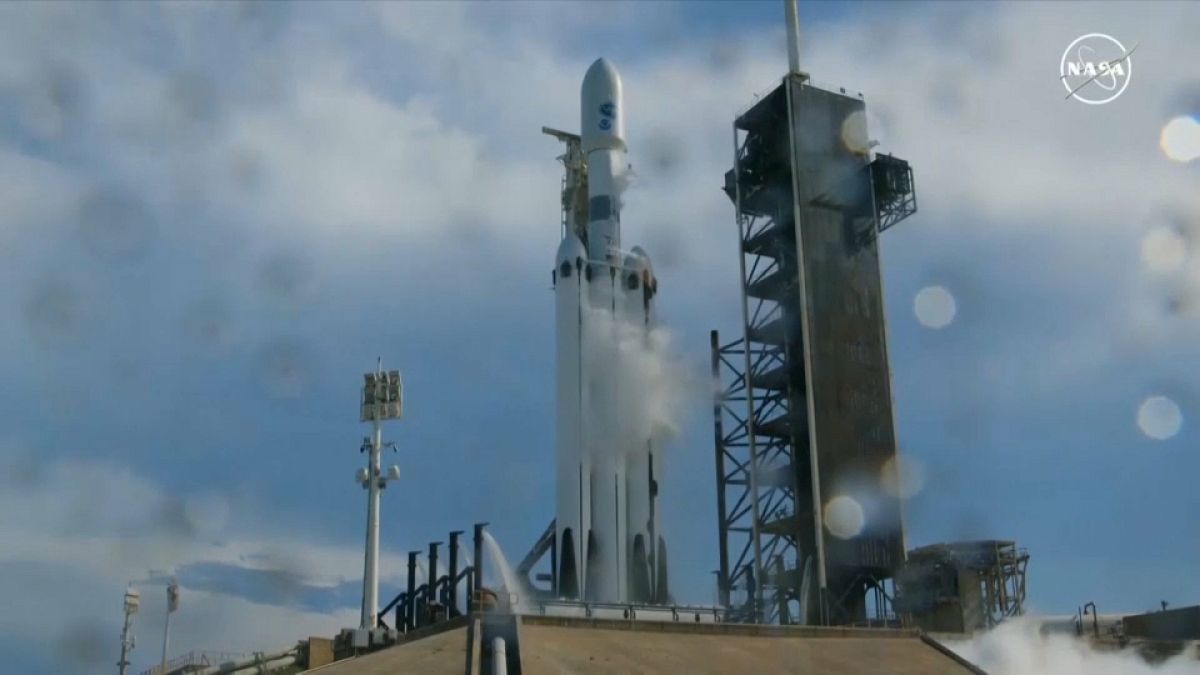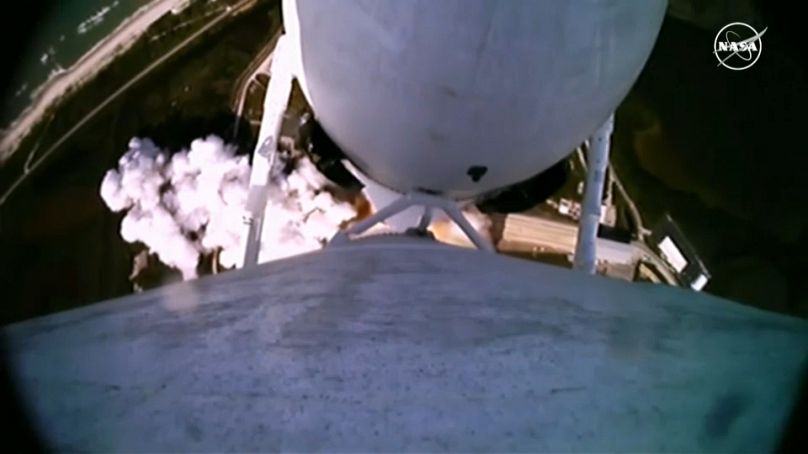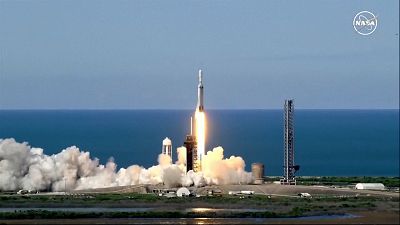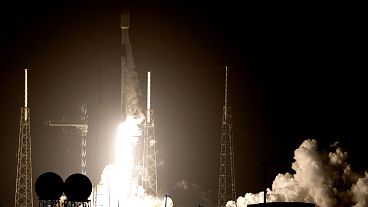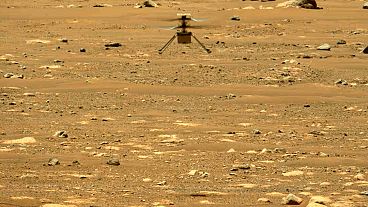The GOES-U satellite took off from the Kennedy Space Centre in Florida on Tuesday afternoon, although its launch was delayed by the threat of storms.
A SpaceX Falcon Heavy rocket has launched a hurricane-hunting GOES-U weather satellite into orbit, completing a fleet of four craft at the heart of a €10 billion upgrade to the United States' forecasting infrastructure.
The satellite's launch was delayed after forecasters predicted a 70 per cent chance of late afternoon storms. It took off from the Kennedy Space Centre in Cape Canaveral at 5.26 pm EDT (11.26 pm CET), roughly 10 minutes late.
The GOES-U satellite was propelled by more than 5 million pounds of thrust from the Falcon Heavy's 27 engines at the base of three strapped-together first-stage boosters.
After helping push the rocket out of the dense lower atmosphere, the two side boosters fell away and reversed course to fly back to dramatic side-by-side landings at Cape Canaveral.
A minute-and-a-half after the side boosters separated, the core stage dropped away to break up as planned as it fell into the Atlantic Ocean below.
Hurricane-hunting satellite
The new satellite will provide continuous, real-time coverage of weather and dangerous environmental conditions, including hurricanes, across much of the Western Hemisphere.
"NOAA's geostationary satellites are an indispensable tool for protecting the United States and the one billion people who live and work in the Americas," said Pam Sullivan, GOES programme director. "They provide a constant real-time view of weather and dangerous environmental phenomena across the western hemisphere".
Dan Lindsey, NOAA's GOES programme chief scientist, said once operational GOES-19 "will be the sentinel in the sky to keep an eye on hurricanes" spawned in the Atlantic that threaten the eastern United States, Caribbean islands, Central America and the Gulf Coast.
The satellite's primary camera, the Advanced Baseline Imager, or ABI, will be able to "scan these big storms as frequently as every 30 seconds to get minute-to-minute warnings out to the public".
When Hurricane Maria hit Puerto Rico in 2017, he said, the island's weather radar was knocked out. "Forecasters actually used the satellite imagery to aid in issuing things like flash flood warnings or severe storm alerts," Lindsey said.
The new satellite is also equipped with a Geostationary Lightning Mapper, or GLM, an instrument that detects lightning flashes in hurricanes and other severe storms. Data from GLM helps researchers better understand how lightning intensity is related to the growth of such storms.
GOES-19 will serve as the primary satellite for observing the central United States, Lindsey said, "places like 'tornado alley,' or really severe storms throughout the continental US. One of the major threats in the Central Plains is something called a supercell. We can see the lightning from the supercells and get that lightning warning out to the public".
Researchers at the University of Wisconsin developed a tool called "LightningCast," a machine learning algorithm "that predicts the probability that lightning will occur within the next 60 minutes," Lindsey said.
"Say there's an outdoor sporting event. Forecasters can look and see the probability that lightning will occur in the next hour," he said. "And if it's a high probability, they may consider warning the public, getting the people who are on the field to safety and getting the fans to safety."
The ABI instrument also monitors volcanic eruptions and the vast ash clouds they generate that can pose a threat to aircraft.
GOES-U will monitor space weather as well, imaging the sun's ultraviolet and X-ray emissions, measuring changes in the solar wind and magnetic fields on the lookout for solar flares and other high-energy events.
GOES-19 is the final member in a set of four advanced satellites, each one costing roughly €467 million. GOES-R, now GOES-16, was the first satellite in the series, launched in November 2016. NOAA is developing even more powerful satellites that eventually will replace GOES-16, 17, 18, and 19.

